
Who Can He Be?
Shroud History
The history of the Shroud can be divided into three phases.
The period from 1901 AD to the present day has been an era in which our knowledge of the Shroud has been massively increased through the efforts of researchers worldwide who are keen to unlock the mysteries surrounding this enigmatic cloth.
There is a widely accepted, continous historical record that traces the existance of the Shroud back to 1355 AD, when it was first exhibited in Europe by a French nobleman named Geoffroi de Charny. However, no one knows how de Charny came to possess the Shroud and so the trail ends here.
There are no undisputed historical records that cover the period from 33 AD to the fourteenth century but there are several manuscripts and accounts that date from these years which allude to a miraculous image of Christ that was "not made by hands". By piecing together these references, it is possible to complete a historical jigsaw which traces the Shroud back to first century Judea.
The most notable details of the Shroud's two thousand year history are shown below. Use the tab labels shown to see details of the most significant historical events from each of the three phases of its history.
33 to 1204 AD
33AD
The Shroud is first mentioned in the Gospels of Matthew, Mark, Luke and John, all of which describe how the body of Jesus was wrapped in a linen cloth and laid in a tomb following His crucifixion.
"When the even was come, there came a rich man of Arimathaea, named Joseph, who also himself was Jesus' disciple. He went to Pilate, and begged the body of Jesus. Then Pilate commanded the body to be delivered. And when Joseph had taken the body, he wrapped it in a clean linen cloth and laid it in his own new tomb, which he had hewn out in the rock." Gospel of Matthew, 27: 57-60
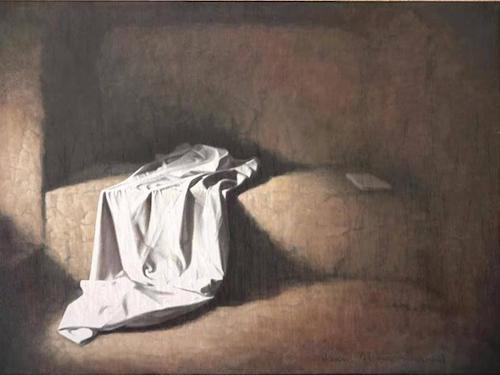
The Bible doesn’t mention what happened to this cloth but it seems reasonable to assume that the followers of Jesus would have carried it away and hidden it during the periods of Christian persecution. There is however a bible passage that suggests that the Shroud was used to help spread the message of Christianity. In a letter from St. Paul to followers in the Roman province of Galatia, where some of the new converts were having their faith tested by heretics, he writes:
"O foolish Galatians, who hath bewitched you, that ye should not obey the truth, before whose eyes Jesus Christ hath been evidently set forth, crucified among you?" Galatians, 3: 1
He cannot have been referring to them having been eye-witnesses of the crucifixion as it had taken place several years earlier and hundreds of miles away in Jerusalem. Instead, it seems likely that they could have witnessed the markings of the crucifixion that can be seen on the Shroud.
c. 33 - 50 AD

According to the traditions of the Eastern Orthodox Church, following the crucifixion, the apostle Thomas sent a disciple of Jesus known as Thaddeus to Edessa to heal King Abgar V. Edessa is known today as Urfa, or in Arabic, Şanliurfa, and is the capital city of the Şanliurfa province in south eastern Turkey. Thaddeus had brought a cloth containing a miraculous image of Jesus and after seeing the image, the king was cured. Abgar converted to Christianity and allowed Thaddeus to preach the Christian message throughout his kingdom. He also replaced a pagan image that was mounted above the city gate with the miraculous image.
After the death of Abgar, his son came to the throne and reverted to paganism. He ordered the image of the pagan god to be displayed once again in its former position and commanded that the image of Christ be destroyed. However, a bishop saved the sacred image by sealing it in a wall of the city gate, where it remained for nearly five hundred years.
544 AD
The city of Edessa miraculously survives an attack by the powerful Persian Army in 544 AD. A contemporary account by a Syrian scholar named Evagrius Scholasticus describes how the Persians laid siege to the city during which they constructed a large mound of timber to help them scale the city walls. The Edessans tried to set the timber mound on fire but without success. On the brink of defeat, they brought out the image of Jesus ‘not made by hands’, washed it with water and sprinkled the water over the timber. It immediately caught fire and quickly reduced to ash and cinders, causing the Persians to abandon the siege.
c. 550 AD
Following this miraculous defence of the city, copies of the Image of Edessa, which became known as the Mandylion, begin to adorn churches throughout the Byzantine Empire. This leads to a stylised representation of Christ and the oldest surviving example is the Christ Pantocrator icon of St. Catherine’s monastery in Sinai, which dates from approximately 550AD. The facial features of Christ on this and other Byzantine icons painted during this period appear to have been copied from the image seen on the Shroud today.
944 AD
The Image of Edessa, or Mandylion, remained in the city until 944 when it is taken to Constantinople by the Byzantine emperor Romanos Lecapenos. Its arrival is officially celebrated on August 16th that year, a date that became established as a permanent feast day for the image and is still observed by the Eastern Orthodox Church. The presence of an image of Jesus ‘not made by human hands’ in Constantinople is documented in several manuscripts dating from the tenth to the thirteenth century.

1203 - 1204 AD

A thirteenth century book called ‘The Conquest of Constantinople’ written by a French knight named Robert de Clari provides more evidence of the Shroud’s presence in Constantinople. He was part of the Fourth Crusade, which had stopped in Constantinople to restore the rightful Emperor to the throne. After this had been achieved the crusaders camped outside the city for several months awaiting their reward. During this time, de Clari explored the city and witnessed the display of a Shroud-like cloth in one of Constantinople’s churches. He wrote:
"And among those other there was another church which was called My Lady Saint Mary of Blachernae, where there was the sheet in which Our Lord had been wrapped, which every Friday, raised itself upright, so that one could see the form of our Lord upon it and no one, either Greek or French, ever knew what became of this sheet when the city was taken." Robert de Clari, 'The Conquest of Constantinople'
After losing patience waiting for their reward, the crusaders attack the city, ransacking palaces, houses and churches for their treasures and prized relics. Their murderous assault of one of the most sacred Christian cities leaves a trail of death and destruction which horrifies Pope Innocent III, who excommunicates the Crusaders.
1204 - 1355 AD
According to de Clari, no one knew what had happened to the Shroud following the sack of Constantinople. Whoever came to possess the Shroud may well have chosen to keep it hidden until this horrendous crime became a distant memory. There are traces of evidence which suggest that it had been in the possession of the Order of Knights Templar, which was eventually purged and disbanded by King Philip IV of France and Pope Clement V. In 1314, Jacques de Molay, the Grand Master of the Templars, is burned at the stake alongside the Order’s Master of Normandy, a man named Geoffroi de Charny. Intriguingly, the man who will come into possession of the Shroud some forty-one years is also named Geoffroi de Charny.
1353 to 1900 AD
1353
The first known expositions of the Shroud are held in Lirey at a church built by Geoffroi de Charny. He never disclosed how he came to be in possession of the Shroud but some believe that it had come to him from Constantinople. Large crowds of pilgrims are attracted and special souvenir medallions are struck, one of which still survives and can be found today at the Cluny Museum in Paris.
1356
Geoffroi de Charny is killed by the English at the Battle of Poitiers, during a last stand in which he valiantly defends his king. The Shroud remains in the de Charny family's possession.

Pilgrim Medallion
1389
Bishop Pierre d'Arcis of Troyes complains to anti-pope Clement VII at Avignon about the exhibiting of the Shroud at Lirey. He describes the cloth as bearing the double imprint of a crucified man and that it is being claimed as the true Shroud in which Jesus' body was wrapped, attracting crowds of pilgrims. A draft copy of his letter to the pope, known as the dArcis memorandum, survives to this day.
The following year, Clement VII wrote to Bishop d'Arcis, ordering him to keep silent on the Shroud, under threat of excommunication. On the same date Clement writes a letter to Geoffroi II de Charny (son of Geoffroi de Charny) stating the conditions under which expositions could be allowed.
1453
Margaret de Charny, daughter of Geoffroi II de Charny, receives from Duke Louis I of Savoy the castle of Varambon and revenues of the estate of Miribel near Lyon in return for 'valuable services' which are thought to have been the bequest of the Shroud. This is an extraordinary exchange which indicates that Duke Louis could have been in no doubt whatsoever about the authenticity of this sacred relic.
1502
After spending several years moving around with the Savoys during their travels, the Shroud is given a permanent home in the Royal Chapel of Chambéry Castle. The Shroud is displayed on the Chapel's high altar, then entrusted to the care of archdeacon and the canons of the Chapel, who place it in its case and deposit it behind the high altar, in a special cavity hollowed out of the wall. Access to the cavity is secured by an iron grille with four locks, each opened by separate keys, two of which are held by the Duke of Savoy. Pope Sixtus IV confers on the Chambéry chapel the title Sainte Chapelle.
1532
Fire breaks out in the Sainte Chapelle, seriously damaging all its furnishings and fittings. Canon Philibert Lambert summons the help of a blacksmith to prise open the grille to rescue the case containing the Shroud. The relic is left with a series of burns, as well as water stains resulting from efforts to extinguish the fire. Fortunately, the burns barely touch those areas of the linen cloth that are marked with the image of Christ. Two years after the fire, Poor Clare nuns repair the Shroud by sewing patches over the fire-damaged areas of the Shroud and a large support sheet to the back of the Shroud

1578
The Shroud is moved to a new permanent home in the Cathedral of San Giovanni Battista in Turin. In the years that follow, the House of Savoy grows increasingly powerful and eventually becomes the ruler of Italy.
1898
Following a public exposition, Secondo Pia, an Italian amateur photographer, makes the first photograph of the Shroud of Turin. The astonishing discovery that the photographic negative reveals a clear, lifelike image of Christ ushers in a new era in the Shroud's history: the era of science.
1901-present
1902
The publication of Secondo Pia’s photographs at the turn of the century causes waves within scientific circles. Professor Yves Delage, who had been agnostic, presents a paper on the Shroud to the Academy of Sciences, Paris, in which he argues for the Shroud's medical and general scientific convincingness. He concludes by stating that in his opinion, the Shroud had wrapped the body of Christ.
This proves to be a controversial presentation. Marcelin Berthelot, the Secretary for the physics section of the Academy and a resolute atheist, immediately orders Delage to rewrite his paper prior to publication so that it makes no reference to the Shroud or to Christ.
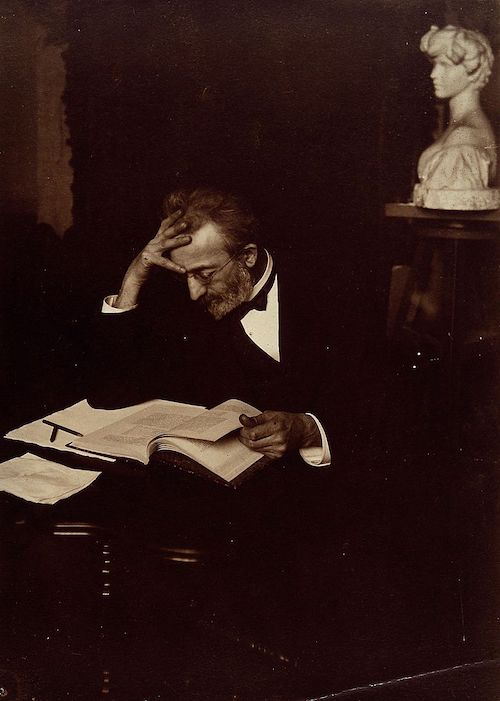
Yves Delage
1931
Giuseppe Enrie photographs the Shroud, the first person to do so since Secondo Pia in 1898. The photographs are taken in the presence of the now seventy-six year old Secondo Pia and scientists of the French Academy. Pia had been publicly accused of having manipulated the photographic negatives of the Shroud and so his reputation is finally restored when those taken by Enrie show the same remarkable characteristics.
That year, Dr. Pierre Barbet begins experiments with cadavers to reconstruct the Passion of Jesus as exhibited in the Shroud's bloodstains and wound marks. His research confirms that the crucifixion nails to the hands had to penetrate the wrists rather than the palms, otherwise they would tear through the skin between the fingers under the weight of the body.
1946
Italy becomes a republic and King Umberto II of Savoy goes into exile in Portugal, never to return.
1969
Turin's Cardinal Michele Pellegrino gives approval for the Shroud to be secretly taken out of its casket to allow a team of experts to study its state of preservation. They examine and photograph the Shroud over the course of three days but do not perform any direct tests. During this same period, Giovanni Battista Judica-Cordiglia takes the first ever colour photo of the Shroud.
1973
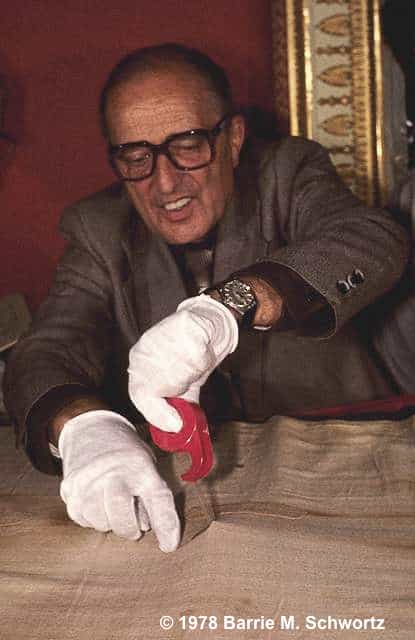
Max Frei
The Shroud is secretly examined by a new Commission of experts, brought together by Cardinal Pellegrino. Professor Gilbert Raes removes samples from the Shroud: a 40 x 13 mm sample from the end edge of the Shroud and a 40 x 10 mm portion from the side-strip, together with one 13 mm warp thread and one 12 mm weft thread. Dr. Max Frei, a Swiss criminalist who had made some notable contributions to forensic science during his career, is also present. He is allowed to take twelve samples of surface dust from the Shroud's extreme frontal end by pressing adhesive tape onto the surface of the fabric.
1976
In 1976, a group of scientists who are using a VP-8 Image Analyzer to evaluate x-rays, put a 1931 Enrie photograph of the Shroud of Turin into the device. This is an instrument that had been designed in the 1970s which converts the light and dark shading of an image into vertical relief. When applied to normal photographs, the result is a distorted and inaccurate representation of the original image. However, when it is applied to the Shroud, the result is an accurate, ‘three-dimensional’ image showing the correct, natural relief characteristics of a human form. Two of these scientists, Dr. Eric Jumper and Dr. John Jackson, are so intrigued by this extraordinary and unexpected result that they decide to form a research team, the Shroud of Turin Research Project (STURP) to investigate the image on the cloth.
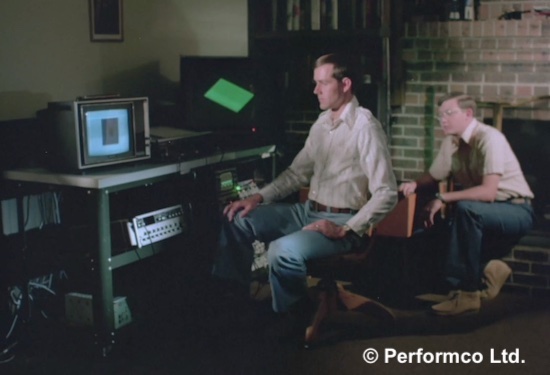
John Jackson and Eric Jumper with the VP-8 Image Analyzer
1978
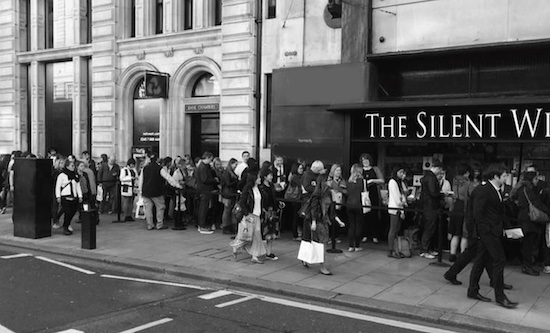
People queuing to watch 'The Silent Witness'
The scientific discoveries that had been made during previous studies of the Shroud had caught the attention of author Ian Wilson and film producer David Rolfe. Ian Wilson’s 1978 book, The Turin Shroud, becomes an international best seller and David Rolfe’s film, The Silent Witness released at Easter that year, smashes box office records and wins a British Academy Award. The result is an upsurge in interest in the Shroud, particularly in the English-speaking world and by the late 1970s, this ancient relic in now an object of intense twentieth century media curiosity.
At the end of a public exposition in Turin, the Shroud is removed from public display and taken into the Hall of Visiting Princes within Turin's Royal Palace to be examined, photographed and sampled over a period of five days. The scientists involved included the STURP team from the USA plus specialists from Europe including Max Frei, Giovanni Riggi di Numana and Professor Pierluigi Baima-Bollone. The Shroud is examined and photographed using photographic floodlighting, low-power X-rays and narrow band ultraviolet light. Dozens of samples are removed from the fabric surface using sticky tape and apparatus is inserted between the Shroud and its backing cloth to examine the underside, which has not been seen in over 400 years. The bottom edge (at the foot of the frontal image) is also unstitched and examined. Baima Bollone obtains samples of a Shroud bloodstain by mechanically disentangling warp and weft threads in the area of the 'small of the back' bloodstain on the Shroud's dorsal image.
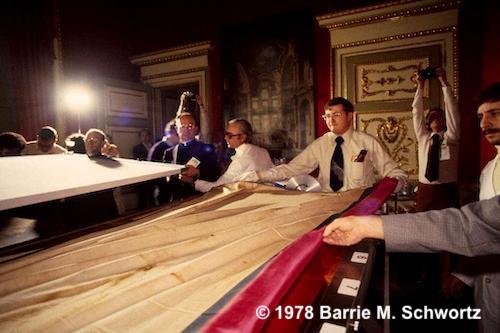
Preparing the Shroud for the 1978 STURP Examination
STURP continues its examinations around the clock performing dozens of tests, taking thousands of photographs, photomicrographs, x-rays and spectra. A total of 120 hours of continuous testing is carried out, with team members working on different parts of the Shroud simultaneously. This is the most in-depth series of tests ever performed on the Shroud of Turin.
1981
After three years of exhaustive study and evaluation of the data collected in the 1978 Shroud examination, STURP issues its Final Report. This concludes that:
"The answer to the question of how the image was produced or what produced the image remains, now, as it has in the past, a mystery.
We can conclude for now that the Shroud image is that of a real human form of a scourged, crucified man. It is not the product of an artist. The blood stains are composed of hemoglobin and also give a positive test for serum albumin. The image is an ongoing mystery and until further chemical studies are made, perhaps by this group of scientists, or perhaps by some scientists in the future, the problem remains unsolved."
1983
King Umberto II of Savoy dies in into exile in Portugal. He bequeaths the Shroud to the Pope and his successors.
1988
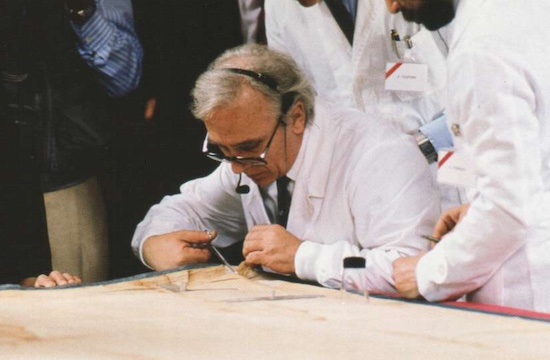
Removal of the Shroud C-14 dating sample
In April, under the supervision of Dr. Michael Tite of the British Museum, a 7 cm by 1 cm strip of cloth is removed from a corner of the Shroud. Postage-stamp sized samples are cut from the strip and given to representatives of three radiocarbon laboratories based in Arizona, Oxford and Zurich. These are taken back to the laboratories to be dated along with three control samples.
The tests are conducted by the laboratories over the summer and results are reported to Michael Tite for analysis by his team of British Museum Statisticians. The result is eventually announced on October 13th at two press conferences, one held in Italy by the Cardinal Ballestrero, Archbshop of Turin and one in the UK held by Michael Tite, along with Edward Hall and Robert Hedges from the Oxford laboratory. They announce that the Shroud is medieval in origin, dating to the period 1260-1390 AD.
1989
The radiocarbon test report is eventually published four months after the result announcement and immediately causes concern within scientific circles for what appear to be errors in the reporting and analysis of the results. After failing to obtain any satisfactory explanation for these errors, several scientists request to see the laboratory test data but these requests are repeatedly refused. The test data will remain hidden for another twenty eight years.
1997
Fire breaks out in Turin's Guarini Chapel, quickly threatening the Shroud's bulletproof display case. Fireman Mario Trematore uses a sledgehammer to break open this case and the Shroud, in its traditional casket, is taken temporarily to Cardinal Saldarini's residence. Signs of arson are found in the Royal Chapel, the walls of which are very badly damaged. Also damaged are the whole High Altar end of the cathedral and the part of the Royal Palace directly adjoining the Chapel
We are grateful to the Italian Ministry of the Interior, Department of Fire Corps, Public Rescue and Civil Defense, Command of the Turin Fire and Rescue Service for the inclusion of the film of the fire in the Guarini Chapel.
2002
A small group of textile experts, headed by Mechthild Flury-Lemberg of Switzerland perform a radical restoration of the Shroud under the auspices of the Archbishop of Turin and his advisors and with the full permission of the Vatican. They remove the thirty patches sewn into the cloth by Poor Clare Nuns in 1534 to repair burn holes from the 1532 fire and replace the backing cloth (frequently referred to as the "Holland Cloth") that was sewn onto the back of the Shroud in 1534 to strengthen the fire damaged relic. The Shroud is handled without gloves and is exposed to bright light and airborne pollution for the thirty-two day duration of this work.
This restoration is carried out in secret, without consulting any of the world's Shroud experts that could have helped ensure that no valuable scientific or historical data was lost or damaged during the restoration. The way the restoration is handled attracts considerable criticism from within the Shroud research community.
2005

Ray Rogers
Former STURP member Ray Rogers publishes a peer-reviewed scientific paper in the Thermochimica Acta journal. Amongst the findings reported in this paper is the result of chemical tests of Shroud threads that indicate that it is much older than the date given by the radiocarbon test. His tests had detected the presence of vanillin, a substance found in linen which slowly decays over time but which can be detected in medieval samples of linen. In contrast, vanillin could not be found in threads from the Shroud. Rogers concludes that the Shroud must be at least 1300 years old.
2013
A group of Italian scientists led by Professor Giulio Fanti of the University of Padua develop three new and innovative ways of dating minute samples of linen. These involve measurements of spectroscopic and mechanical properties of flax. After calibrating their equipment by testing samples of known age dating back to 3500 BC, they use these techniques to date samples of Shroud material. All three tests give results that are close to the first century, with a mean value of 33 BC.
Performco Ltd. Town Hall, Penn Road, Beaconsfield, Bucks HP9 2PP
Copyright © Performco Ltd.
There are no known records which offer proof of a family link between this man and his Templar namesake who had been burned at the stake alongside Jacques de Molay. It is however intriguing that they shared the same name and if de Charny had acquired the Shroud as a result of such a connection, it would explain why he refused to reveal how it came into his possession.
D'Arcis Memorandum
D’Arcis complained that at Lirey, a village within his diocese, a cloth claimed to be the Shroud that had wrapped the body of Christ was being displayed with great ceremony. He stated that a similar exposition had taken place ‘thirty-four years or thereabouts’ earlier, which had been investigated by the then Bishop of Troyes, Henri of Poitiers. According to d’Arcis, this investigation had revealed the Shroud to be a forgery:
Eventually, after diligent inquiry and examination, he [Henri of Poitiers] discovered how the said cloth had been cunningly painted, the truth being attested by the artist who had painted it, to wit, that it was a work of human skill and not miraculously wrought or bestowed.
Sceptics have argued down the years that this artist’s admission that the cloth was a counterfeit relic which he had personally created is conclusive proof that the Shroud is a fake. There are, however, reasons for questioning the contents of the d’Arcis memorandum.
There wasn't any evidence of the alleged investigation by Henri of Poitiers, no copies of the reports or even quotes from those reports.
The vague statement that the exposition had occurred ‘thirty-four years or thereabouts’ earlier suggests a complete lack of any such documentation, since the dates of any such investigation would surely have been recorded.
If the memorandum is true, then it’s almost certain that Geoffroi de Charny would have known that his Shroud was a fake when he was claiming it to be authentic. This completely contradicts his reputation as a noble knight of impeccable honour and integrity.
Bishop Henri wrote a letter in May 1356 which praised Charny for the completion of his Lirey Church and for his devotion and piety. It’s inconceivable that he would have written such a letter if, as claimed by d’Arcis, he had investigated and proved that Charny had been exhibiting a fake relic just one year earlier.
The allegations made by Bishop d’Arcis may well have been based upon rumours or gossip, possibly driven by envy towards the Lirey church, which was generating income from pilgrims attracted by the Shroud at a time when Troyes Cathedral was itself short of funds. Whatever his motivation might have been, he would no doubt have been disappointed with the response from Pope Clement VII, who insisted that d’Arcis should remain perpetually silent about this matter.

